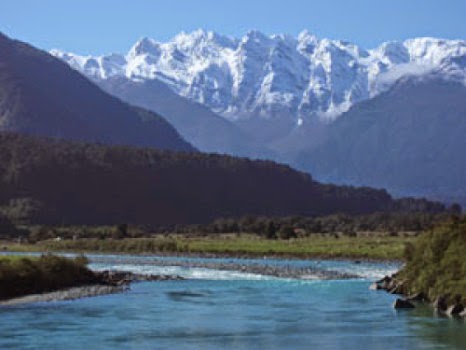
University of Southampton researchers have found that rainwater can penetrate below the Earth’s fractured upper crust, which could have major implications for our understanding of earthquakes and the generation of valuable mineral deposits.
It had been thought that surface water could not penetrate the ductile crust — where temperatures of more than 300°C and high pressures cause rocks to flex and flow rather than fracture — but researchers, led by Southampton’s Dr Catriona Menzies, have now found fluids derived from rainwater at these levels.
Fluids in the Earth’s crust can weaken rocks and may help to initiate earthquakes along locked fault lines. They also concentrate valuable metals such as gold. The new findings suggest that rainwater may be responsible for controlling these important processes, even deep in the Earth.
Researchers from the University of Southampton, GNS Science (New Zealand), the University of Otago, and the Scottish Universities Environmental Research Centre studied geothermal fluids and mineral veins from the Southern Alps of New Zealand, where the collision of two tectonic plates forces deeper layers of the Earth closer to the surface.
The team looked into the origin of the fluids, how hot they were and to what extent they had reacted with rocks deep within the mountain belt.
“When fluids flow through the crust they leave behind deposits of minerals that contain a small amount of water trapped within them,” says Postdoctoral Researcher Catriona, who is based at the National Oceanography Centre. “We have analysed these waters and minerals to identify where the fluids deep in the crust came from.
“Fluids may come from a variety of sources in the crust. In the Southern Alps fluids may flow upwards from deep in the crust, where they are released from hot rocks by metamorphic reactions, or rainwater may flow down from the surface, forced by the high mountains above. We wanted to test the limits of where rainwater may flow in the crust. Although it has been suggested before, our data shows for the first time that rainwater does penetrate into rocks that are too deep and hot to fracture.”
Surface-derived waters reaching such depths are heated to over 400°C and significantly react with crustal rocks. However, through testing the researchers were able to establish the water’s meteoric origin.
Funding for this research, which has been published in Earth and Planetary Science Letters, was provided by the Natural Environmental Research Council (NERC). Catriona and her team are now looking further at the implications of their findings in relation to earthquake cycles as part of the international Deep Fault Drilling Project, which aims to drill a hole through the Alpine Fault at a depth of about 1km later this year.
Journal Reference:
Catriona D. Menzies, Damon A.H. Teagle, Dave Craw, Simon C. Cox, Adrian J. Boyce, Craig D. Barrie, Stephen Roberts. Incursion of meteoric waters into the ductile regime in an active orogen. Earth and Planetary Science Letters, 2014; 399: 1 DOI: 10.1016/j.epsl.2014.04.046
Note : The above story is based on materials provided by University of Southampton.










